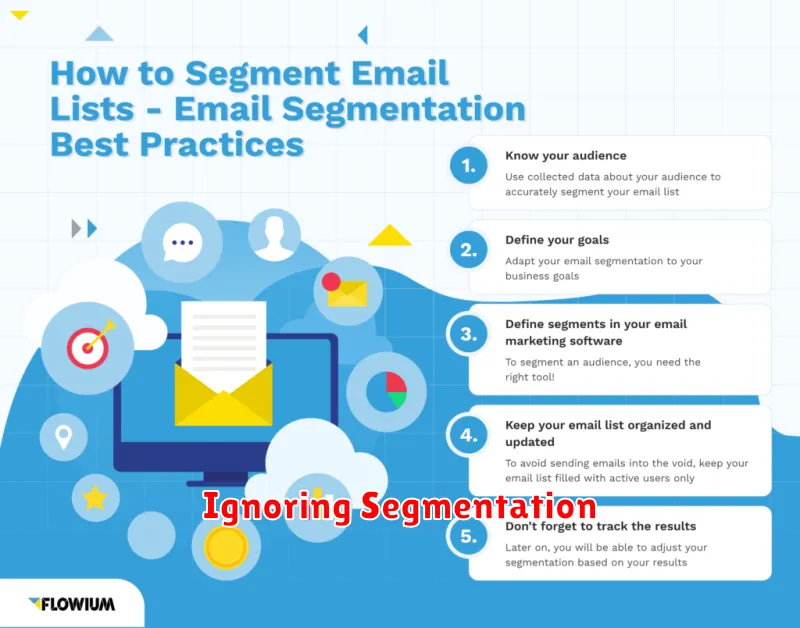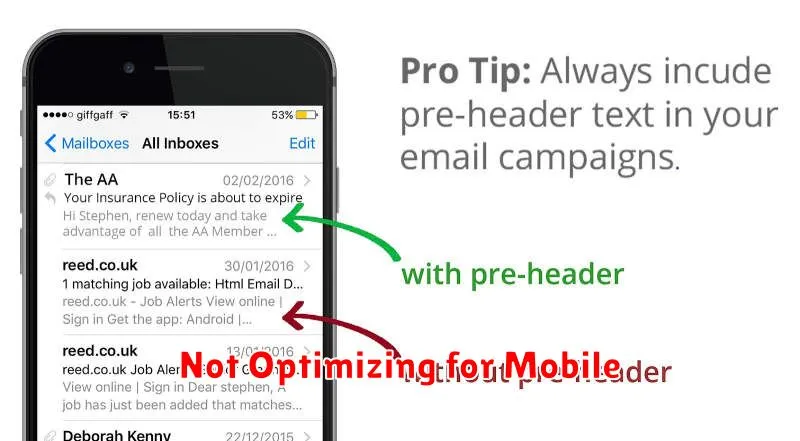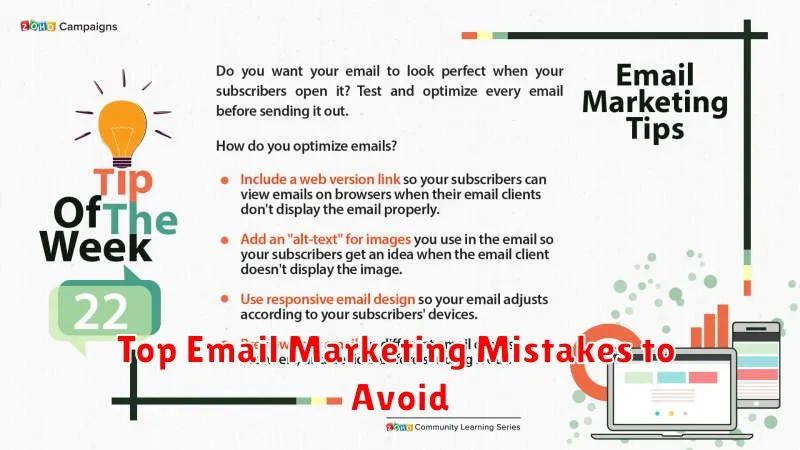Email marketing remains a powerful tool for businesses to connect with their audience, build relationships, and drive conversions. However, even with its proven effectiveness, many businesses fall prey to common email marketing mistakes that hinder their campaigns and prevent them from achieving optimal results. Avoiding these pitfalls is crucial for maximizing your return on investment and ensuring your email marketing efforts are successful. This article will explore the top email marketing mistakes to avoid, providing valuable insights and actionable strategies to elevate your email marketing game and achieve tangible results.
From neglecting list segmentation and crafting unengaging subject lines to ignoring mobile optimization and failing to analyze campaign performance, these mistakes can significantly impact your email marketing success. By understanding these common errors and implementing the recommended best practices, you can transform your email marketing strategy from a source of frustration to a powerful engine for growth and engagement. Let’s delve into the top email marketing mistakes to avoid and discover how to create compelling, effective email campaigns that resonate with your target audience and drive meaningful results for your business.
Ignoring Segmentation

One of the most detrimental email marketing mistakes is ignoring segmentation. This involves sending the same email campaign to your entire subscriber list, regardless of individual preferences, demographics, or behavior.
Segmentation allows you to divide your audience into smaller, more targeted groups based on various criteria. This enables you to tailor your messaging to resonate with specific segments, resulting in higher open rates, click-through rates, and conversions.
By not segmenting your audience, you risk sending irrelevant content, leading to disengagement, unsubscribes, and even spam reports. For example, sending a promotional email for men’s clothing to your entire list, including female subscribers, will likely be ineffective and annoying.
Common segmentation criteria include demographics (age, gender, location), purchase history, website activity, email engagement (opens, clicks), and expressed interests.
Overloading with Content
One of the most common email marketing mistakes is overloading your emails with too much content. Recipients are often busy and inundated with emails already. A lengthy, text-heavy email can be intimidating and may end up deleted without ever being read.
Keep it concise. Focus on a single key message and deliver it efficiently. Use short paragraphs, bullet points, and strong visuals where appropriate (though not included here as requested) to break up the text and make it easier to scan. Prioritize the most important information at the top, as many readers won’t scroll to the bottom.
Think about what action you want the reader to take and make that call to action clear and prominent. Less is more when it comes to email marketing content. A focused, concise message is more effective than a rambling, information-heavy one.
Skipping A/B Testing

One of the most detrimental email marketing mistakes is neglecting A/B testing. A/B testing, also known as split testing, involves sending two slightly different versions of your email to two segmented groups of your audience. This allows you to directly compare which version performs better based on metrics like open rates, click-through rates, and conversions.
Without A/B testing, you’re essentially guessing which elements resonate with your audience. You might assume a certain subject line or call to action is effective, but data-driven insights from testing can reveal a different story. Testing key elements like subject lines, email copy, send times, and button designs can dramatically improve campaign performance.
By skipping A/B testing, you’re missing a crucial opportunity to optimize your campaigns and maximize your return on investment. Even small tweaks identified through testing can significantly improve results over time.
Poor Subject Lines
One of the most common email marketing mistakes is crafting ineffective subject lines. Your subject line is the first, and often only, impression you make on a potential reader. A poor subject line can lead to your email being ignored or even marked as spam.
Vague or generic subject lines such as “Newsletter” or “Update” offer little incentive to open. Similarly, misleading subject lines that don’t accurately reflect the email’s content can damage your credibility and annoy recipients. Overly long subject lines may be truncated in various email clients, obscuring the key message. Finally, using excessive capitalization or punctuation (e.g., “FREE!!!”) can trigger spam filters and appear unprofessional.
Effective subject lines are concise, informative, and engaging. They clearly communicate the value proposition of the email and entice the recipient to open it.
Not Optimizing for Mobile

A significant portion of email opens occur on mobile devices. Failing to optimize your emails for mobile is a critical mistake. Mobile optimization ensures your emails are easily readable and navigable on smaller screens.
Unoptimized emails can lead to a poor user experience, resulting in lower engagement rates, increased unsubscribes, and ultimately, a diminished return on investment. Key elements of mobile-friendly email design include using a responsive template, concise content, large font sizes, and buttons that are easily tapped with a finger.
Consider the mobile experience from the subject line to the call to action. A truncated subject line on a mobile device can lose its impact. Similarly, tiny buttons or cluttered layouts can frustrate mobile users.
Unclear Call-to-Action
A vague or confusing call-to-action (CTA) is a significant roadblock to email marketing success. Subscribers need to understand precisely what action you want them to take. A weak CTA diminishes engagement and reduces conversion rates.
Effective CTAs are clear, concise, and action-oriented. Use strong verbs that encourage immediate action, such as “Shop Now,” “Download Today,” or “Learn More.” Avoid generic phrases like “Click Here” which provide no context and weaken the message’s impact.
Placement is equally crucial. Ensure your CTA is prominently displayed and easily accessible within the email. A button format is generally preferred for enhanced visibility and click-through rates. Maintain consistent branding and visual appeal with your CTA buttons to reinforce your brand identity.

